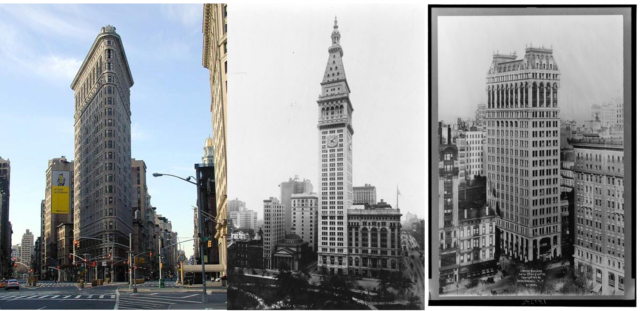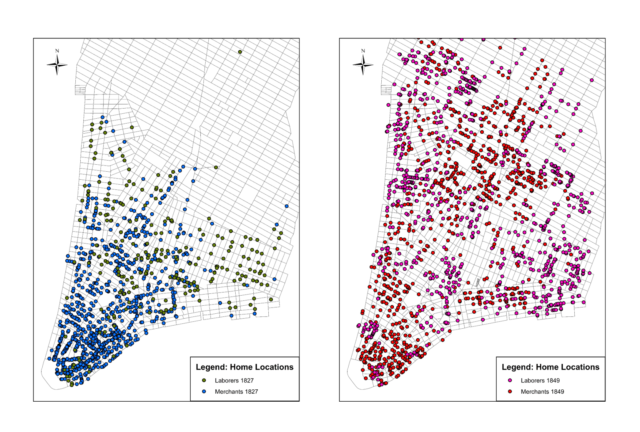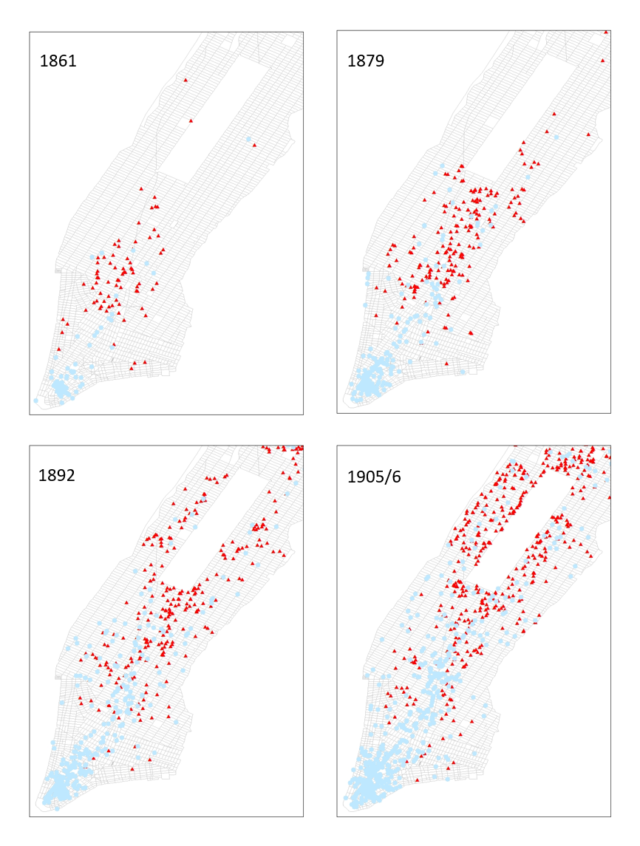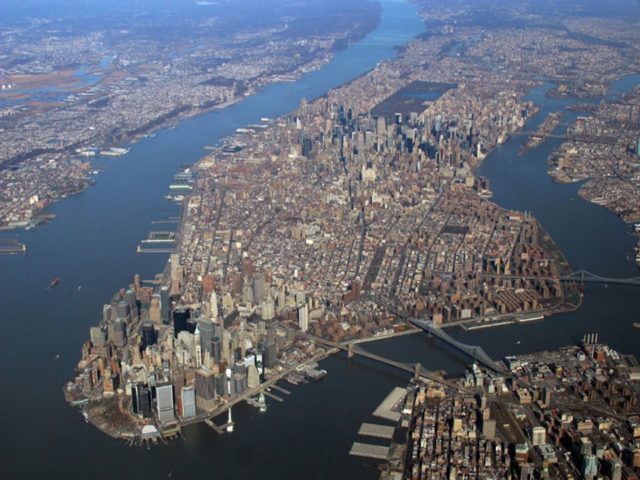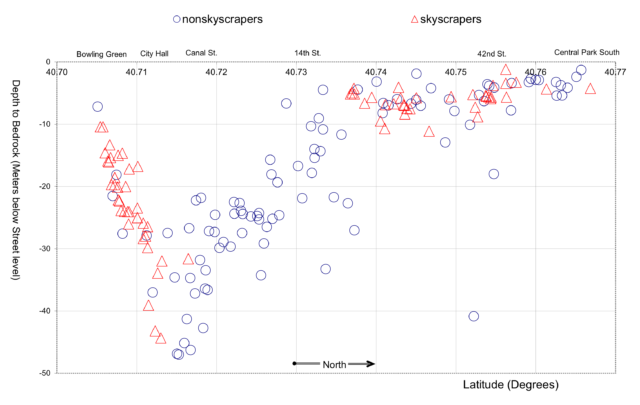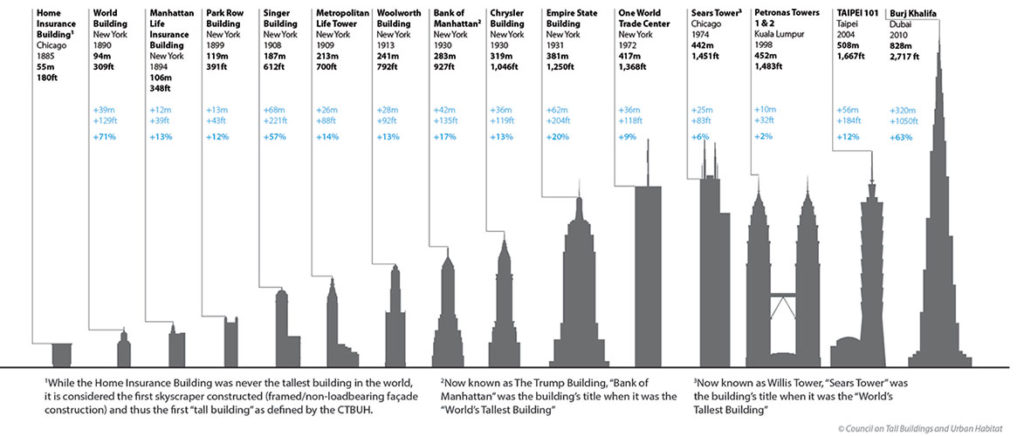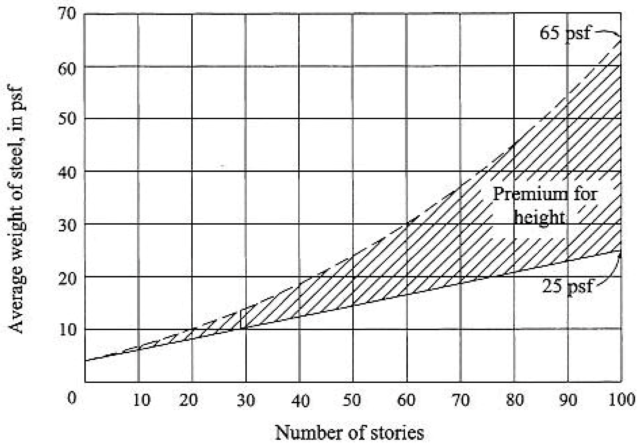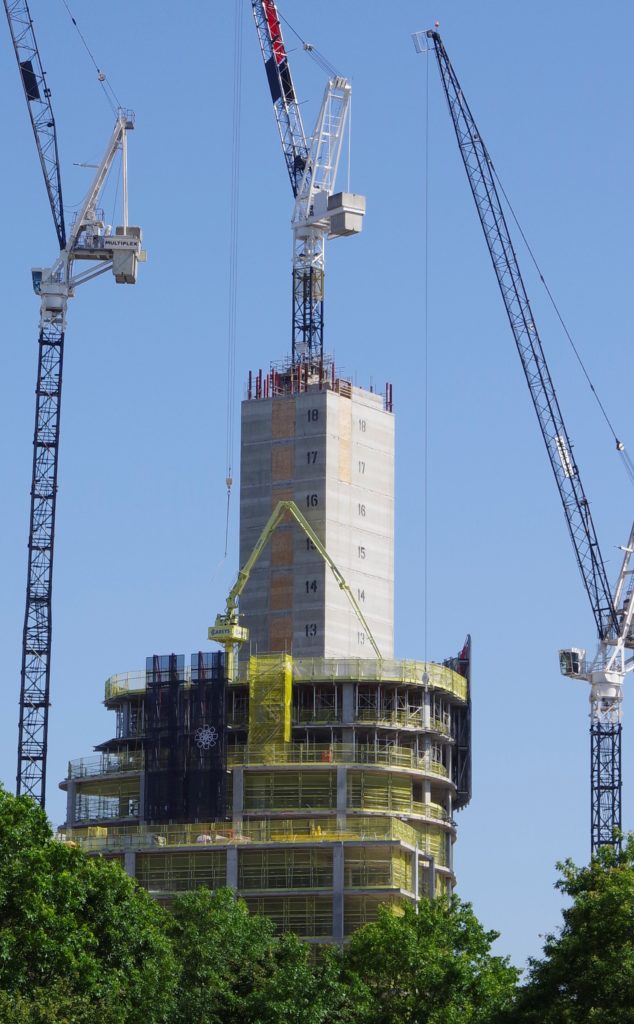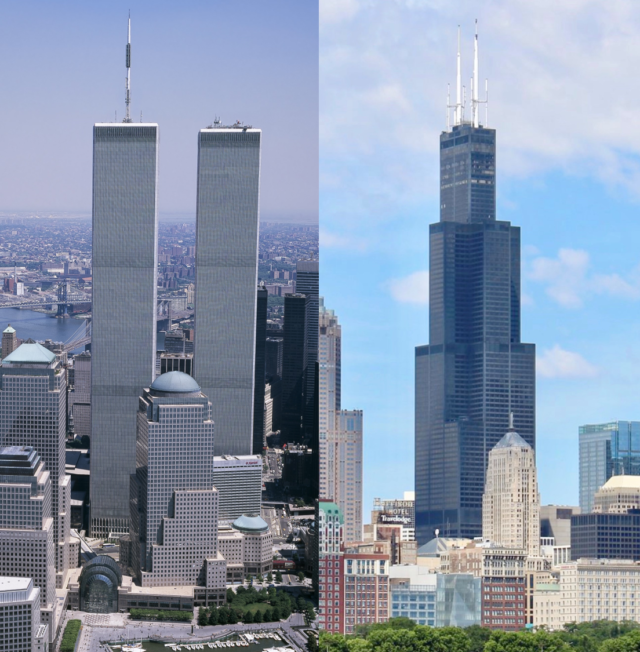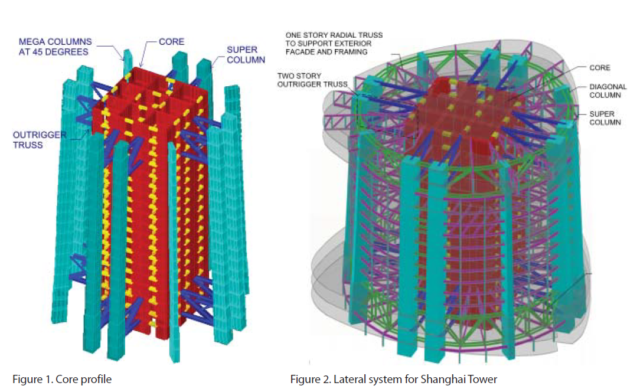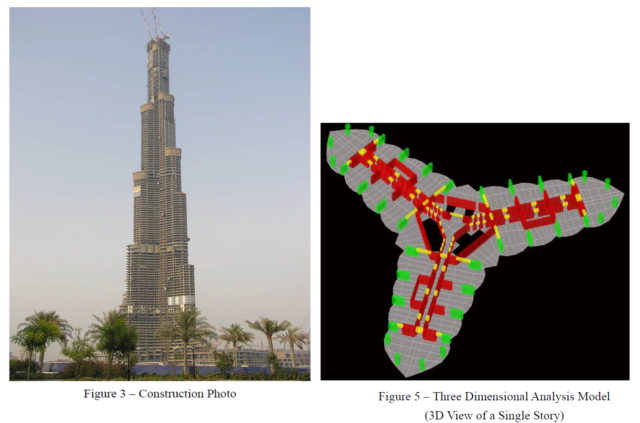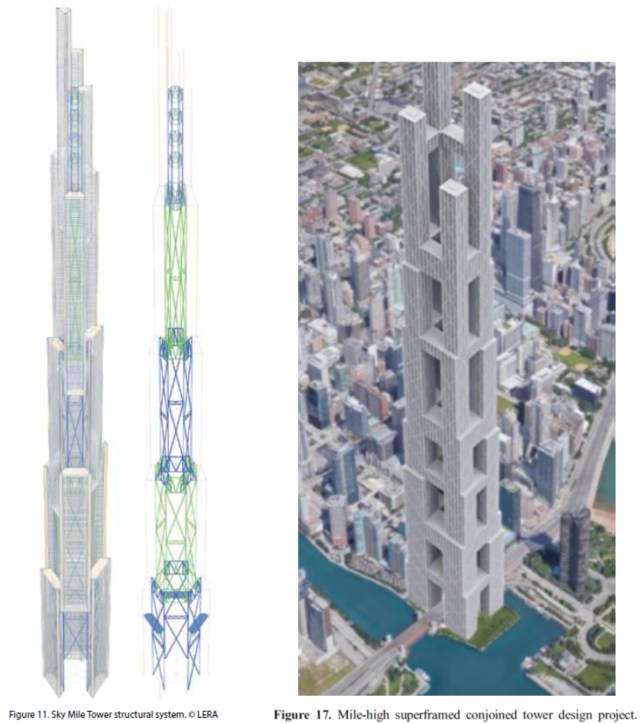Jason M. Barr December 19, 2019
Swaying in the Wind
In the early-1990s, my wife worked for WH Freeman and Co., a publisher of scientific and academic textbooks. Her office was on the 35th floor at 41 Madison Avenue in Manhattan. The building, opened in 1974, is a 41-story modernist glass box designed by Emory Roth & Sons. On extremely windy days, she and her co-workers could feel the building sway—so much so that junior employees would claim motion sickness and request permission to go home. Doors and drawers would sometimes close on their own. Regarding the elevators, my wife recalls, “They told us they were safe, but when windy, they made a weird scraping noise that freaked people out.”
For a skyscraper, wind is a big concern. When a building’s height rises above ten stories, the so-called lateral forces—those usually generated by wind—drive the structural design, as the wind speeds rise dramatically at higher altitudes. A 1,500-foot (457-meter) skyscraper must be fifty times stronger against the wind than a 200-foot (61-meter) one. In very tall buildings, up to ten percent of its structural weight and costs go into wind bracing. Occasionally, the developer doesn’t get it 100% right, and the people inside feel it.
The “Windustry”
But as the demand for skyscrapers has increased, a sophisticated industry has formed to help conquer the wind. In the old days, giants, like the Empire State Building, simply used more and thicker steel to stiffen the structure. But today, there’s a quest among developers to employ methods that use less material to get the same result. For example, before construction begins, a skyscraper model is placed in a wind tunnel to simulate its performance under local conditions. If one style is unsuitable, its shape or structural elements is altered.
Another technique is to hang a massive pendulum on the top floor, which dampens the sway. In general, the aim is not to perfectly stiffen the building, but to slow it down, so its movement is imperceptible (and the elevators don’t screech). Taken together, these innovations reduce the amount of steel or concrete needed, thus lowering the total construction costs. The art and science of wind bracing have progressed rapidly in the last decade or so. So much so that today 1,000 feet or taller buildings are quite common around the world (see graph below).
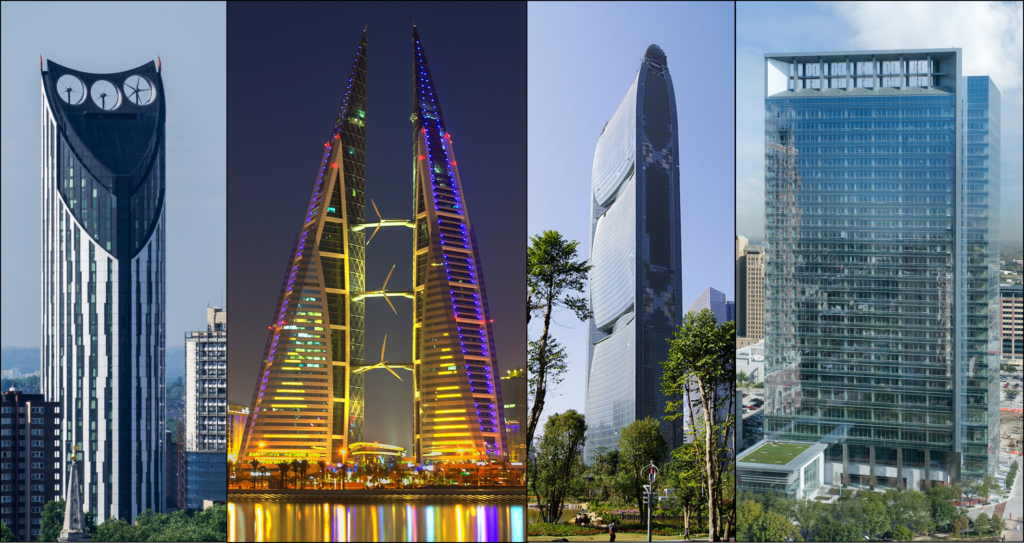
Energy Efficiency and Tall Buildings
One of the big complaints about skyscrapers is that they use a lot of energy—carbon generating energy at that. The question remains, however, about whether tall buildings are, in fact, good or bad for the environment. On the one hand, by virtue of their size, they consume more energy than low-rises. And because many of them are covered in glass, they can require more heating and cooling than smaller masonry clad buildings. On the other hand, by concentrating economic activity in one place, and promoting mass transit use or walking, they can reduce the harmful environmental impacts of sprawl.
Users versus the Structure
But when discussing the energy use of tall buildings, it’s essential to keep in mind the difference between the building itself and the occupants. Buildings with different heights, shapes, materials, plant and equipment, and so on, will use varying amounts of energy, holding constant what the people inside are doing. If we have two identical buildings side-by-side and one is used by finance firms, who engage in high-frequency trading, while the other has low-tech folks, the energy usage will be very different.
The Bank America Tower in New York City offers a noteworthy example. Completed in 2010, it was designed with the latest energy efficiency technology. For instance, it included a 4.6-megawatt combined heat and power plant, which runs on natural gas. The wasted heat created for electricity is recycled to heat and cool the building in winter and summer, respectively, thus reducing overall natural gas usage. However, after a few years in operation, the skyscraper was found to be one of the highest energy users in the city. A large part of this was from the occupants. The tower is filled with stock and bond traders who require intensive computing.
Skyscrapers and Sustainability
But given their size and visibility, city officials, architects, engineers, developers, and building owners are concerned about reducing the carbon footprints from skyscrapers. To do so in an economical way is both good for the bottom line and society. Many cities have policies that incentivize greenhouse gas reductions. And, the non-profit organization, the U.S. Green Building Council, certifies buildings as meeting one of several energy-efficiency categories. Their Leadership in Energy and Environmental Design (LEED) certification program encourages developers to include innovations that make their buildings more sustainable. Many new tall buildings in the U. S. gain some form of certification because tenants are willing to pay more to be in them. But LEED certification, in and of itself, may not necessarily mean a reduction in carbon emissions. If the building’s fuel comes from oil or gas, its occupants will produce carbon. Since building owners often have limited control over whether their energy provider is generating power from sustainable or renewable methods, they need to either reduce their power consumption or find a way to create green energy themselves.
Wind Power to the Rescue?
Given that tall buildings are surrounded by wind, in theory, it could be cheaply harvested for energy. This idea has motivated a handful of developers to embed wind turbines directly into their skyscrapers. Around the world, there are currently a handful of cases.
Completed in 2010, the Strata SE1, a/k/a the Razor, is a 43-story residential skyscraper in London that has three turbines on the roof, making the building look like an electric razor. The turbines were expected to generate 8% of the building’s total energy consumption.
The Bahrain World Trade Center is a twin-towered projected, which opened in 2008. In between the two fifty-story buildings are three turbines rotating around three horizontal beams connected to each tower. The turbines were designed to add a relatively modest cost of 3% and were expected to generate 11% to 15% of the towers’ energy consumption. The buildings were also shaped to funnel the wind directly to the turbines.
The Pearl River Tower is a 71-story skyscraper in Guangzhou, China. Completed in 2011, it has vertical turbines placed at about one-third and two-thirds the way up inside the belly of the structure. They are placed on mechanical floors, which have no windows and are exposed directly to the wind. Initial studies predicted that the façade openings would accelerate the wind speed by 2.5 times, resulting in more than eight times the power generation when compared to a turbine located in an open field.
The Hess (Discovery) Tower, a 29-story high-rise in Houston, completed in 2010, included ten vertical-axis turbines on the roof.
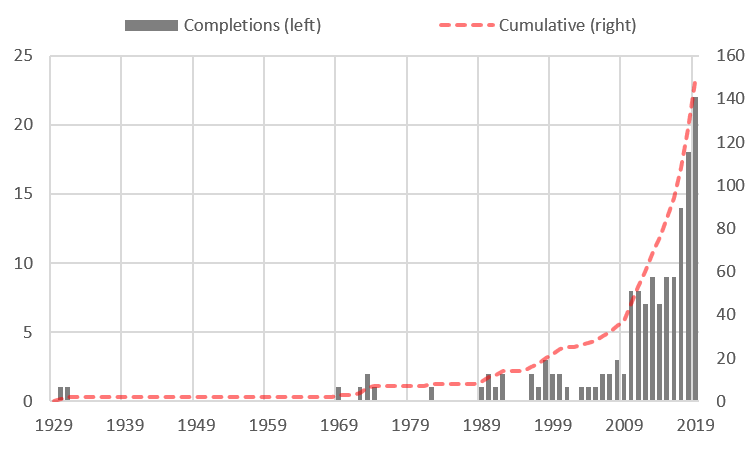
The Results
What have been the results of these cases? It seems that wind turbines in skyscrapers are not quite ready for “prime time.” The learning-by-doing process has suggested that the economics don’t quite work as hoped or expected. They currently don’t appear to be economically efficient, as the amount of energy they typically produce is low, and the savings do not pay for their additional costs.
What was Learned?
To get more information on what was learned, I talked with the wind engineers, Brad Cochran and Roy Denoon, of CPP Wind Engineering & Air Quality Consultants. Over the years, they have been directly involved with wind turbine projects in tall buildings. According to Cochran and Denoon, there are several reasons why turbines have not met expectations.
Turbulence
First is that along the edges of buildings, the wind tends to “split,” generating a circulating wind cavity. Inside the cavity, the wind slows down; while just above it, the flow can be turbulent. The ideal conditions are high-speed but steady winds. These cavities create the opposite effect. To make rooftop turbines work, they need to be extended much higher up, but this dramatically increases their costs, assuming that Federal Aviation Administration or local zoning requirements don’t prohibit them at such heights.
Blade Size
The second problem relates to the size of the blades. For wind to generate sufficiently large quantities of energy to produce a satisfactory return on investment, the blades need to be quite long. Brad Cochran says,
For wind to produce significant energy, you need a large surface area. Even a 50kW wind turbine, which would likely produce on average closer to 10kW (20% capacity factor), requires a blade diameter on the order of 20 meters (65 feet). The roofs of most tall buildings don’t have a lot of extra space where these size devices would likely fit. Nor are they designed to handle the additional structural loads that the turbines may impose on the roof. Furthermore, to make even a minor impact on achieving a net-zero building would require several of these wind turbines being mounted on a single roof. So, the metrics just don’t work out.
Maintenance
The third issue is the maintenance problem. Wind turbines, by their very nature, are placed in extreme environments. This means they require extra maintenance by specialized personnel, significantly increasing the costs and reducing the return on investment.
Accidents
Finally is the possible harm to residents. Wind blades can become dislodged. If they are atop a structure, they can fall onto the street, hitting pedestrians or damaging property. Additionally, the rotating blades produce noise, which may be uncomfortable to tenants.
Learning by Doing
The handful of cases discussed above seemed to have cooled the enthusiasm from about a decade ago. Evidently, the turbines have been turned off on the Strata SE1. They never even went into operation on the Hess (Discovery) Tower, after one of the blades fell off the roof and landed in a pickup truck. And there is little reporting on the energy production from the Bahrain towers or the Pearl River Tower, again suggesting little to boast about.
But the more significant issue, I would argue, is that while experimentation is necessary and vital, it’s hard to generate a sample of many cases. Wind turbines are expensive to embed and maintain. They create a risk that only a few developers are willing to bear. In those cases, the failed economics generates a kind “once bitten, twice shy” type of situation, especially when the press is particularly unkind. Ideally, one would like to create a large sample of buildings with different designs and technologies and study how well the turbines performed across may cases. But given the high costs, such a large sample is not being generated. Unlike an automobile or a smartphone, one can’t first build and test a prototype skyscraper and then redesign it after its actual performance is understood. Once constructed, it’s, more or less, stuck with the infrastructure it has, at least for several years.
A Breath of Fresh Air?
Nonetheless, we are headed for a climate catastrophe as world temperatures continue to rise. Skyscrapers are here to stay, and they play an important role in the growth of cities. So, government policies should encourage more experimentation in green designs and technologies. From them, we can learn from both the successes and the failures. There’s no direct path to a carbon-free economy. It must come through both trial and error and making carbon much more costly to produce. I say it’s not time yet to give up on befriending the wind.
Continue reading related blog posts: NYC skyscrapers and greenhouse gas emissions here, or urban sprawl and CO2 emissions here.
